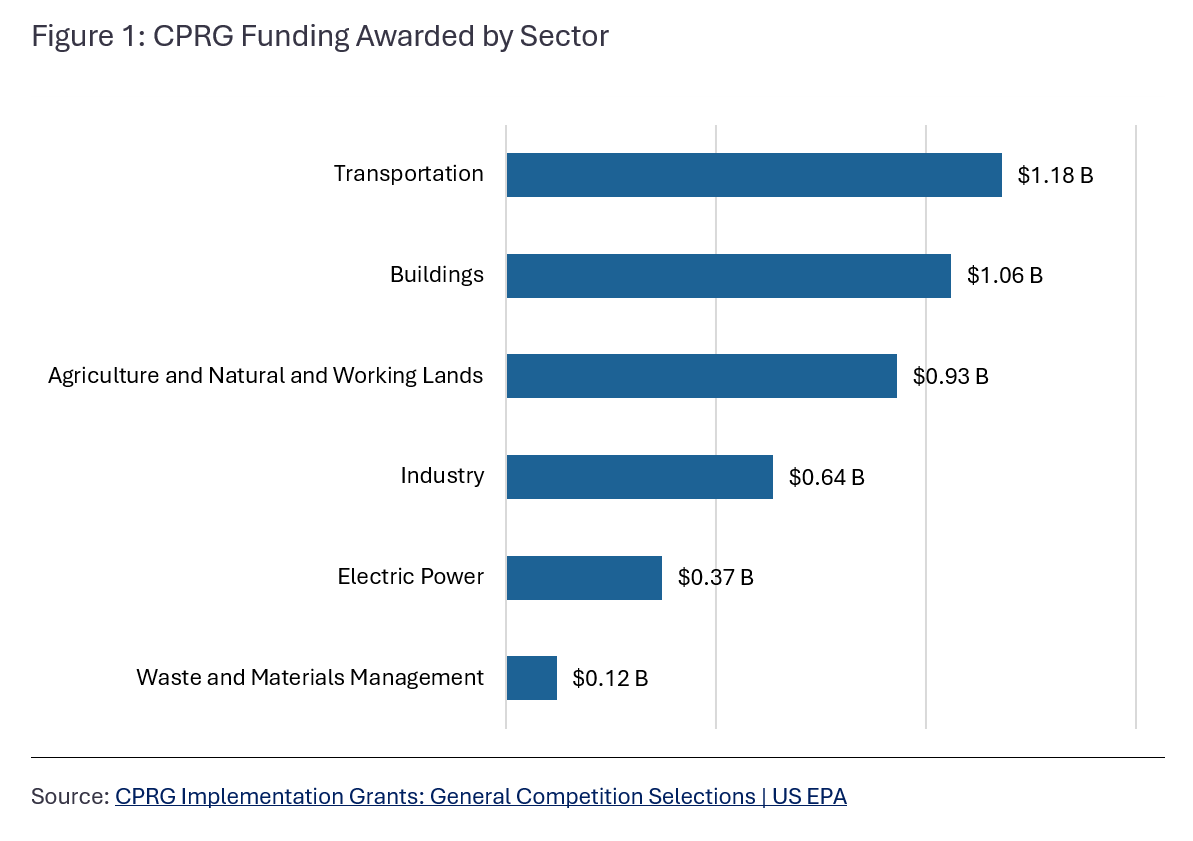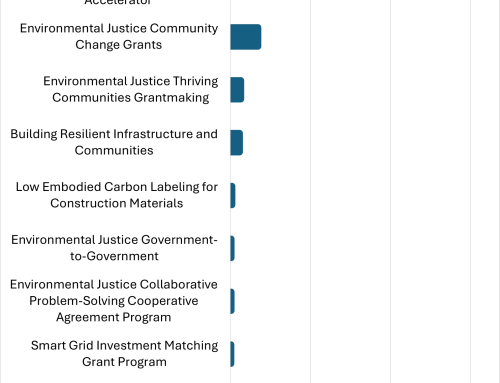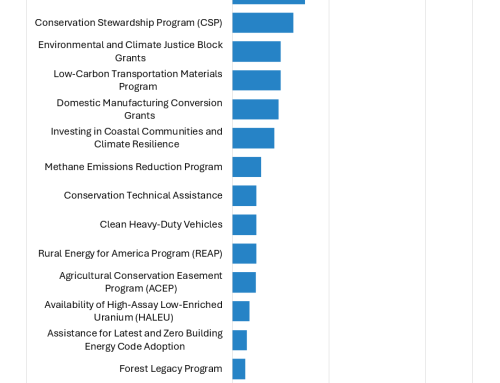
The Climate Pollution Reduction Grants (CPRG) program provides $5 billion in grants to states, local governments, tribes, and territories to develop and implement ambitious plans to reduce greenhouse gas emissions and other harmful air pollution. Established in the Inflation Reduction Act (IRA), CPRG provides funds in two phases:
- Phase 1: $250 million for non-competitive planning grants
- Phase 2: $4.6 billion for competitive implementation grants.
Yesterday, the Environmental Protection Agency (EPA) announced Phase 2 grant awardees. The EPA awarded over $4.3 billion in implementation grants to 25 applicants, with approximately $3.13 billion going to states, $1.17 billion to Metropolitan Statistical Areas (MSAs), and $37.3 million to Tribes. The awardees will support projects in 30 states. Most of the funds will support projects in the transportation and building sectors, totaling $1.18 billion and $1.06 billion respectively. The EPA will award a further $300 million for Tribes, Tribal consortia, and territories later this summer. With these awards, we are now tracking $162 billion awarded for clean energy projects from the IIJA and IRA on the Climate Program Portal. This does not include loans or tax credits.
The South Coast Air Quality Management District in California received nearly $500 million for their INVEST CLEAN project, making it the largest implementation grant award and the largest award among municipalities. The project will fund efforts to decarbonize the transportation and goods movement in Southern California by installing over 1,000 medium- and heavy-duty (MDHD) vehicle chargers, deploying 800 MDHD electric vehicles, and electrifying 18 locomotives. Learn more from their Priority Climate Action Plan (PCAP) here. The largest award among state applicants went to the Connecticut Department of Energy and Environmental Protection for a total of $450 million. The funding will help accelerate the adoption of cold-climate air-source heat pumps, heat pump water heaters, and ground source heat pumps in single- and multifamily residential buildings. Learn more from their PCAP here.
The EPA awarded planning grants in 2023. A total of $141 million went to states, $80 million for MSAs, and $26.7 million for tribes and territories. Almost every state applied to receive funds for planning grants. Four states – Iowa, Florida, South Dakota, and Kentucky – opted out, and the money was repurposed to MSAs. Wyoming initially took the planning money, but opted to return it. With this funding, applicants developed a Priority Climate Action Plan (PCAP) which lays out their plans to reduce greenhouse gas emissions in six key sectors: electricity generation, industry, transportation, buildings, agriculture/natural and working lands, and waste management. The EPA received a total of 212 PCAPs, with 47 produced by states, 80 by MSAs, and 85 by tribes and territories. Then, most applied for competitive funding to implement various parts of their plans – that funding was announced yesterday. Some applied in coalitions, like the New Jersey Department of Environmental Protection whose coalition members included the Connecticut Department of Energy and Environmental Protection, Delaware Department of Transportation, Maryland Department of the Environment (MDE), and Maryland Department of Transportation.
Applicants will undergo a second planning phase for their Comprehensive Climate Action Plan (CCAP), which are due two years after the planning grant award, or about mid-2025. In contrast to the planning grants, the implementation grants announced yesterday were competitive. Over 300 applicants sought about $33 billion in funding.
The states and MSAs that did not receive implementation funding will now look to other funding mechanisms to support their climate-mitigating measures, like the IRA’s clean energy tax credits, home energy rebates, and Greenhouse Gas Reduction Fund recipients, and federal grant programs like the Grid Resilience and Innovation Partnerships (GRIP) Program, the Clean Heavy-Duty Vehicles Program, and the Charging and Fueling Infrastructure Program. The 25 projects awarded yesterday can also be expanded and serve as examples for other states working to tackle climate change.


